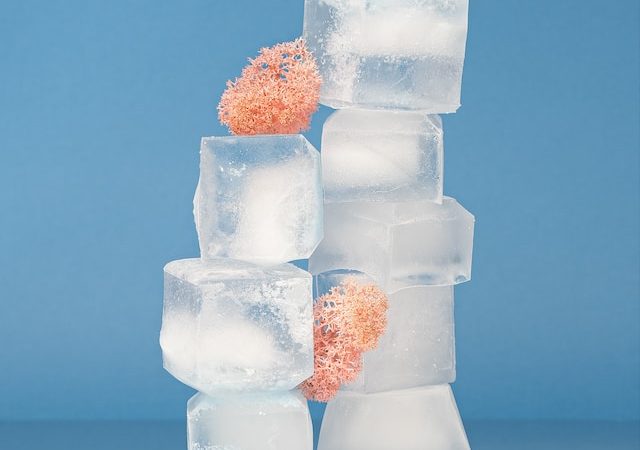Skin icing, also known as cold therapy or cryotherapy, involves applying ice or cold temperatures to the skin’s surface. It is believed to provide several benefits for the skin, including boosting collagen production and tightening pores. While the evidence supporting these claims is limited, there are some potential mechanisms by which skin icing may have
Skin icing, also known as cold therapy or cryotherapy, involves applying ice or cold temperatures to the skin’s surface. It is believed to provide several benefits for the skin, including boosting collagen production and tightening pores. While the evidence supporting these claims is limited, there are some potential mechanisms by which skin icing may have these effects.
1. Improved blood circulation: Applying cold temperatures to the skin can constrict blood vessels, leading to vasoconstriction. When the cold stimulus is removed, the blood vessels dilate, resulting in increased blood flow to the area. This improved circulation may enhance the delivery of oxygen, nutrients, and growth factors to the skin cells, which can support collagen synthesis and overall skin health.
2. Reduction of inflammation: Cold temperatures can help reduce inflammation in the skin. Inflammation is associated with various skin conditions, including acne and enlarged pores. By decreasing inflammation, skin icing may help minimize pore size and improve the appearance of the skin. Additionally, reducing inflammation can promote a healthier skin environment and support collagen production.
3. Stimulation of collagen production: Collagen is a protein that provides structure and elasticity to the skin. With age and other factors, collagen production can decline, leading to wrinkles and sagging skin. Some proponents of skin icing believe that cold temperatures can stimulate collagen synthesis. The cold may activate certain cells in the skin, such as fibroblasts, which are responsible for producing collagen. However, more research is needed to confirm this effect.
4. Temporary tightening effect: When cold temperatures are applied to the skin, it can cause temporary tightening of the tissues. This tightening effect may help reduce the appearance of enlarged pores and improve overall skin texture. However, the results are generally temporary and may not lead to long-term pore size reduction.
It’s important to note that the scientific evidence supporting the specific benefits of skin icing is limited, and most of the information available is anecdotal. While many people find skin icing refreshing and believe it provides certain benefits, it may not have the same effects for everyone. Additionally, it’s essential to use caution when applying cold temperatures to the skin, as excessive cold or prolonged exposure can lead to adverse effects, such as tissue damage or cold burns.
If you are interested in trying skin icing, it’s best to consult with a dermatologist or skincare professional who can provide personalized advice based on your skin type and specific concerns. They can help determine if skin icing is suitable for you and recommend the best techniques and products to use.

















Leave a Comment
Your email address will not be published. Required fields are marked with *